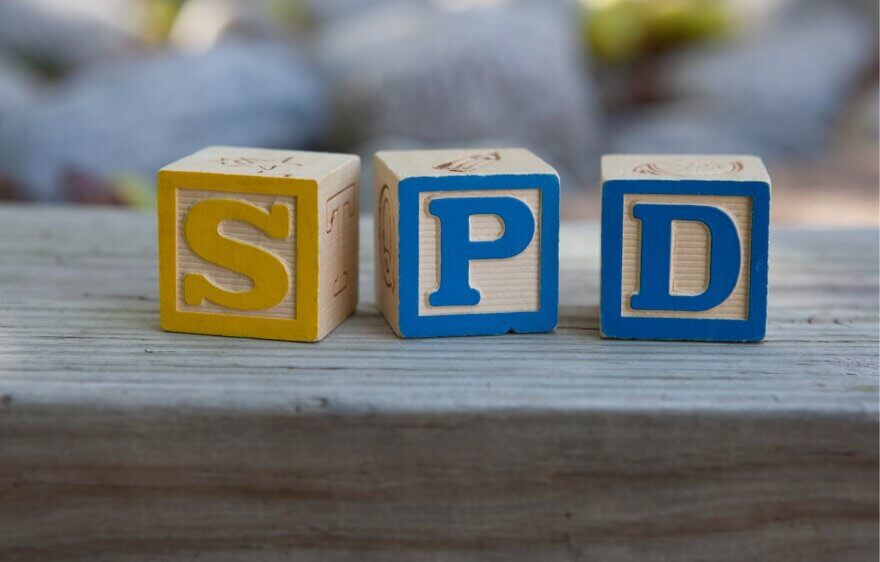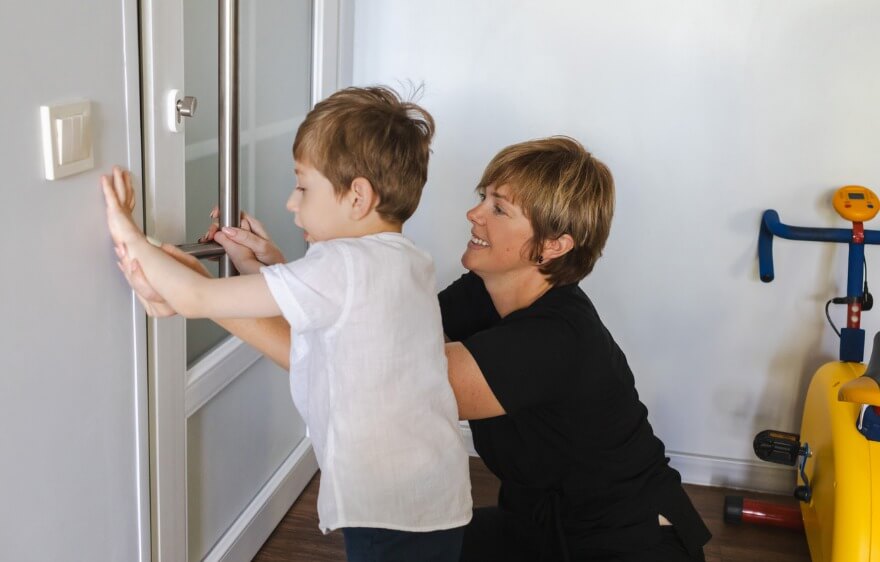Is your child sensitive to sounds, picky about clothing textures, or prone to meltdowns in bustling places? It could be more than just a preference or personality trait, they might have Sensory Processing Disorder (SPD). SPD affects how children perceive and respond to sensory input, impacting their daily lives and your family’s overall dynamic.
This condition can bring many challenges, but with the right support, strategies, and a bit of patience, children with SPD can thrive. Here, we’ll walk you through what SPD is, the common symptoms, potential causes, diagnosis, treatment options, and tips on how you can best support your child.
What is Sensory Processing Disorder?
Sensory Processing Disorder, or SPD, occurs when the brain has trouble receiving, organizing, and responding to information from the senses. In kids with SPD, sensory signals from things like touch, sound, or movement can become jumbled, leading to over- or under-reactions. This can make certain daily activities feel overwhelming or even distressing.
While SPD is not officially classified as a stand-alone disorder, it is often seen in children with developmental conditions, such as autism spectrum disorder (ASD), although it can exist on its own. The good news? Understanding and identifying SPD can help you better meet your child’s needs, enhancing their comfort and ability to function in daily life.
SPD Symptoms
Symptoms of sensory processing disorder vary greatly and each child may show different signs and react to different senses in unique ways. The symptoms of sensory processing disorder can be divided into the categories of oversensitivity, undersensitivity, and behavioral challenges related to the condition.
Oversensitivity (Hypersensitivity)
Children who experience oversensitivity may feel overwhelmed by everyday sensations that most people find manageable or barely notice. Here are some common ways oversensitivity can show up in kids with SPD:
- Easily overwhelmed by loud noises or bright lights.
- Refusal to wear certain fabrics due to texture.
- Aversion to getting hands dirty or touching certain materials.
- Strong reactions to tastes, smells, or food textures.
Undersensitivity (Hyposensitivity)
On the flip side, some children with SPD have undersensitivity, meaning they may not register sensory input as strongly as others. This can lead them to seek out intense sensations in order to feel regulated and engaged. Here are a few common signs of undersensitivity in kids with SPD:
- Craving intense sensory experiences, such as swinging, spinning, or crashing into things.
- Seeming unaware of pain or discomfort.
- Enjoying touching everything in reach and constantly seeking physical contact.
- Difficulty sensing hunger or temperature changes.
Behavioral Challenges
Sensory struggles often spill over into behavior, as children with SPD navigate the challenges of processing sensory input. This can make daily activities, social interactions, and routines feel overwhelming. Here are some behavioral signs that may indicate sensory processing difficulties:
- Meltdowns or tantrums in busy or unfamiliar settings.
- Difficulty following directions or focusing on tasks.
- Overly cautious or anxious about new experiences.
- Avoidance of eye contact, social withdrawal, or apparent moodiness.
Understanding the specific triggers and behaviors that affect your child can be helpful for building their comfort and reducing SPD-related stress.
What Causes Sensory Processing Disorder?
The causes of SPD are not yet fully understood, but there are a few contributing factors that researchers have identified:
- Genetics: Studies suggest a hereditary component, as SPD often appears in families with other sensory or developmental conditions.
- Prenatal and Birth Factors: Premature birth or complications during pregnancy or delivery may increase the risk of SPD.
- Environmental Factors: Childhood environments that lack varied sensory input may contribute, while overly stimulating environments might also play a role.
- Neurological Differences: Some researchers propose that SPD could be caused by differences in the brain’s structure or function, particularly in the way sensory information is processed.
SPD Diagnosis
SPD can sometimes be difficult to diagnose because the symptoms may look similar to those of ADHD, autism, or anxiety. Generally, an occupational therapist (OT) will conduct an assessment to diagnose SPD. This assessment may involve observing how your child reacts to different sensory stimuli and tasks, as well as asking questions about their everyday experiences.
In some cases, a multidisciplinary team, which may include psychologists and speech therapists, works together to create a comprehensive understanding of a child’s sensory challenges and to rule out other conditions. The diagnostic process is essential because it helps create an individualized approach to support your child’s unique needs.
Treatment Options for Sensory Processing Disorder
There’s no one-size-fits-all treatment for SPD, but several approaches have shown promise in helping children manage sensory challenges:
- Occupational Therapy (OT): OT is the gold standard for SPD treatment. Through guided activities, OTs help children become more comfortable with sensory input. For example, they may use sensory integration therapy, exposing children to stimuli in a safe and controlled way to build tolerance over time.
- Sensory Diets: A “sensory diet” is a customized plan that includes activities tailored to your child’s sensory needs. If your child is hyposensitive, it may include jumping, swinging, or other physical activities to satisfy their sensory craving. For hypersensitive children, it could involve calming techniques like deep breathing or quiet play in a dimly lit room.
- Home Modifications: Modifying your home environment can make a big difference. For example, noise-canceling headphones can help with sound sensitivity, while weighted blankets provide a calming sense of pressure for children who crave touch.
- Therapeutic Activities at Home: Incorporating therapeutic play into daily routines can help children with SPD practice processing sensory information in a low-stakes environment. Simple activities like playing with textured toys, working on balance exercises, or enjoying water play can have big benefits.
- Speech and Language Therapy: For children with SPD who also struggle with communication, speech and language therapy may be useful. Speech therapists often work with children to improve social interactions and help them feel more comfortable in communication settings.
Caring for a Child With Sensory Processing Disorder
Caring for a child with SPD is a journey that involves patience, creativity, and empathy. Here are some simple and fun tips to help you support your child:
1. Observe and Identify Triggers
Spend time observing what types of sensory input seem to trigger certain reactions in your child. Keep a log of situations, foods, textures, or sounds that set them off. Knowing their triggers can help you plan accordingly and avoid unnecessary distress.
2. Create Sensory-Friendly Spaces
Set up a calming, sensory-friendly space in your home where your child can retreat when things get overwhelming. This could be a cozy corner with soft blankets, dim lighting, or quiet toys that provide comfort without excessive stimulation.
3. Be Mindful of Routine Changes
Children with SPD often feel more secure with predictable routines. Sudden changes, new environments, or unexpected loud noises can be stressful. Giving your child plenty of notice and gradually preparing them for change can help them feel more in control.
4. Encourage Self-Regulation Skills
Help your child learn how to regulate their own sensory needs by introducing activities that calm or energize them as necessary. Deep breathing exercises, squeezing stress balls, or even chewing gum can be calming strategies they can use independently.
5. Provide Positive Reinforcement
Acknowledge and praise your child when they successfully manage challenging situations. Positive reinforcement can go a long way in building their confidence and comfort with sensory input over time.
6. Seek Support and Stay Connected
Finding a community of other parents, whether online or locally, can provide a valuable support network. Sharing experiences, tips, and encouragement with others who understand SPD can be empowering for you as a parent and beneficial for your child.
7. Celebrate Small Wins
Progress for a child with SPD may be slow and incremental, but every small step forward is worth celebrating. Whether it’s tolerating a new texture or managing a loud environment without distress, these are big achievements that deserve recognition.
How to Help a Child with Sensory Processing Disorder
Sensory Processing Disorder can be challenging, but remember, you are not alone on this journey. With understanding, patience, and a few sensory strategies, you can create a more comfortable and supportive environment for your child. By working closely with qualified therapists, building a sensory-friendly home, and empowering your child to manage their sensory needs, you’re setting the stage for your kiddos to thrive.
With the right guidance and a strong support system, your child can learn to navigate sensory challenges and enjoy new experiences in a way that feels safe and fulfilling. Keep moving forward, celebrate those victories, and remember that every small step is a win.
Schedule Your Child’s Care Assessment Today
At Care Options for Kids, we understand the unique challenges of caring for a child with health conditions. Our dedicated team of pediatric home health nurses is here to support your family with compassionate, expert care tailored to your child’s needs. Contact us today to schedule an assessment and learn how we can help you navigate this journey with confidence and care.
Click here to start your journey to better care.
This post is for educational and informational purposes only. You should always speak with your own therapist before implementing this information on your own.






